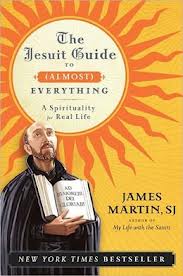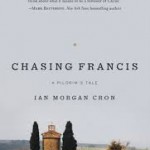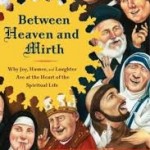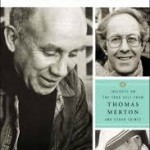In chapter 2 of his book The Jesuit Guide to (Almost) Everything: A Spirituality for Real Life, James Martin, SJ, lays out what he sees as six paths to God–by which he means 6 ways in which people seek God.
He deals with this early on in the book because he does not assume everyone reading it believes in God–and since the book is about Ignatian spirituality, he wants to lay some groundwork.
Each path, Martin tells us, has benefits and pitfalls. Maybe one or two resonate with you. I think I know people in every category, or some combination.
1. The Path of Belief–“…belief in God has always been part of their lives. They were born into religious families or were introduced to religion at an early age. They move through life more or less confident of their belief in God….Their lives, like every life, are not free from suffering, but faith enables them to put their sufferings into a framework of meaning.”
The benefit of this path is that “faith gives meaning to both the joys and struggles of life. A pitfall is “an inability to understand people on other paths and a temptation to judge them for their doubt or disbelief.”
2. The Path of Independence–These people “…have made a conscious decision to separate themselves from organized religion, but they still believe in God. Maybe they find church services meaningless, offensive, dull, or all three. Maybe they’ve been hurt by church.”
“One strength of this group is a healthy independence that enables them to see things in a fresh way–something their own religious community often desperately needs….The main danger…is a perfectionism that sets up any organized religion for failure.”
3. The Path of Disbelief–“Those traveling along the path of disbelief not only find that organized religion hold no appeal for them (even if they sometimes fins its services and rituals comforting), but have also arrived at an intellectual conclusion that God may not, does not, or cannot exist. Often they seek proof for God’s existence, and finding none, or encountering intense suffering, they reject the theistic worldview completely.”
“The cardinal benefit of this group is that they take none of the bland assurances of religion for granted. Sometimes they have thought more deeply about God and religion than some believers have….They also have a knack for detecting hypocrisy, cant, or lazy answers….The main danger for this group is that they sometimes expect God’s presence to be proven solely in an intellectual way.”
4. The Path of Return–“People on this group typically begin life in a religious family but drift away from their faith. After a childhood in which they were encouraged (or forced) to attend religious servies, they find them either tiresome or irrelevent or both. Religion remains distant, though oddly appealing. Then something reignites their curiosity about God….Thus begins a tentative journey back to faith–though it may not bet he same faith they knew as a child.”
This path is Martin’s own, and he gives no benefit or pitfall (not sure why). He mentions that his own drift from faith involved the collapse of the “God as problem solver” God of his youth (after the death of a close friend). His move back to faith involved through prompting, learning to see a “different kind of God–a God who was with you in suffering…”
from faith involved the collapse of the “God as problem solver” God of his youth (after the death of a close friend). His move back to faith involved through prompting, learning to see a “different kind of God–a God who was with you in suffering…”
5. The Path of Exploration–Though settled in their religious beliefs, these seekers “often find that their own spiritual practices are enhanced through interactions with other religious traditions.”
“The benefit is that “after a serious search, you may discover a tradition ideally suited to your understanding of God, your desires for community, and even your own personality. Likewise, returning to your original community may give you a renewed appreciation for your ‘spiritual home.'” The pitfall is “the danger of not settling for any tradition because none is perfect. An even greater danger for explorers is not settling on any on religious tradition because it doesn’t suit them.”
6. The Path of Confusion–“This final path crosses all the other ones at various points. People on the path of confusion run hot and cold with their childhood faith….They haven’t ‘fallen away,’ but they haven’t stayed connected….finding God is a mystery, a worry, or a problem.”
“The main benefit of this path is that it often helps people fine-tune their approach to their childhood faith….But confusion can lapse into laziness.”
These paths may seem like people do all the leg work, but Martin also talks a good bit in the book of God finding us on our path.
I also understand how some might react to Martin’s “non-exclusivist” approach to spirituality. In that case, wherever he speaks of “religion” or “tradition,” substitute “denomination.” These points appear to me to be applicable in a variety of permutations.
Which path, if any, speaks most clearly to you? Do you know people on different paths than yours or are most people you know on your path? Is “path” even a good way of talking about the religious life?
















